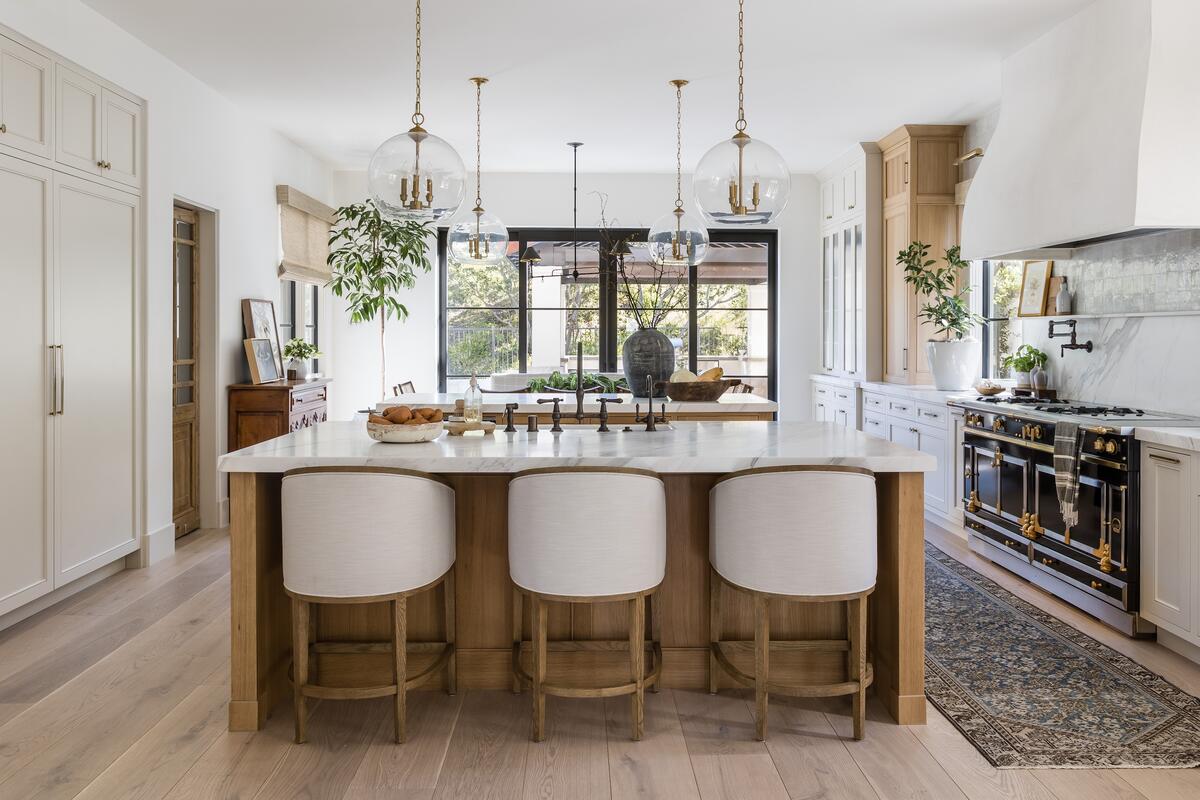Everyone wants a kitchen island, right? Wrong. Three designers face off on what really constitutes a kitchen essential.

Heart of the Home
Function is a cornerstone in configuring a layout, and islands provide an entirely separate zone to maximize kitchen prep and facilitate family gathering. While storage can be added with any cabinetry, islands offer versatility and help turn the room into a true workhorse. And if you prefer to triangulate your kitchen flow, they simplify the positioning of your sink, stove and refrigerator at an angle from one another, letting you glide through your prep with ease. We also appreciate their humble beginnings as worktables, and find that they offer both a classic sensibility and modern convenience that just can’t be beat with non-island layouts.
When the space allows for it, we are major fans of including not one but two islands to amplify the workability of a kitchen, ground the overall space, and provide added room to socialize and entertain. From cooking together to helping with schoolwork to hosting, they offer a multiuse zone where our clients love to gather for meals and memories with children and guests. There’s a visual upside too: There is nothing more beautiful than the interplay of materials in a space. Islands offer an expanded playground to layer textures, finishes and colors—you can add interest and dimension by bringing in a new wood tone or stone, or mixing in complementary hardware.
Let’s be honest: Who doesn’t love the island life? While it may be the current trend to simplify and streamline, creating communal areas adds a layer of warmth and heart that we just can’t pass up.
—Leigh Lincoln and Aly Morford, Pure Salt Interiors, Newport Beach, California
.jpg)
Free Space
If there isn’t the room to do it right, an island can feel intrusive in a space that’s meant to lure you in with warmth and hospitality. You’re constantly walking around it to get to what you need—it becomes an impediment to efficiency rather than a value-add. I often tell my clients that they’d be better off without one, and when I take the time to walk them through the reasons why, they get it. And let’s be clear: You don’t need an island to install showstopping materials either.
When I designed my kitchen last year, I decided to forgo an island. Keeping the floor open allows my starburst-patterned floor tiles to truly shine. I also wanted to keep the room’s midsize footprint (which works perfectly for me, my husband and our three fur babies); accommodating an island would have required knocking out a wall. But when I shared my space on Instagram, I was surprised by how many people seemed to think that a well-designed kitchen needs an island. That couldn’t be further from the truth.
Islands have become so ubiquitous that many clients can’t imagine a kitchen without one, but this isn’t the only way to include seating, a sink or a stovetop in your space. My kitchen is along the wall, allowing for space-saving ideas like drawers and rollouts that work so much better than shelving; there is a place for everything, even a treat drawer for my dogs. Where an island would be cumbersome, we are able to utilize every inch of our space. Besides, I’d much prefer a cozy banquette that makes you never want to get up. There are so many ways to design a kitchen, you just have to be open to them. Come on over and experience a kitchen without an island. You won’t be sorry!
—Gail Davis, Gail Davis Designs, South Orange, New Jersey



































